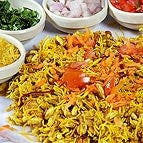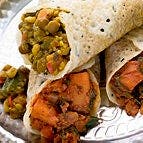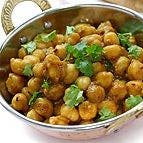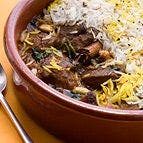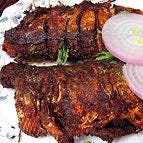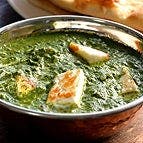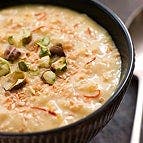How to Give Your Favorite Indian Foods a Healthy Upgrade


All food is meant to be enjoyed—and Indian cuisine is no exception. Whether you're a complete newbie to Indian food or have a favorite go-to spot, planning ahead for your meal can help you make the most of the occasion and your Points budget. Before you order, take a look at the menu and decide what you'd like and how many PersonalPoints you want to spend. Feeling stumped? Use these tips as your guide.
9 Tips for Staying in your Points Budget
Embrace a taste
Rather than sit down for an extensive 3-course meal, incorporate Indian flavors into your meal with a smaller takeaway from a place that specializes in one item, like an order of amazing vegetarian dosa or kadhi from that one spot. If it’s a special occasion that calls for a multi-course meal, split each course a few ways to save on Points.
Look beyond naan
Naan, the most popular bread in Indian restaurants, can easily measure 10 inches across and often comes brushed with ghee (clarified butter). Having one piece is like eating an entire personal pizza crust and comes with a PersonalPoints value of about 8. Unlike naan bread, roti is unleavened and is available in white or whole-grain. A typical 6-inch round has a PersonalPoints value of about 3. Chapati is similar to roti in character and calories, also with a PersonalPoints value of 3. Made on a skillet, it closely resembles a whole-wheat tortilla.
Avoid the app trap
The “pakora,” “samosa” and “bhaji” families of small bites are delicious, but prep typically involves deep-frying. If you’re looking to cut back on PersonalPoints values, keep an eye on portions when it comes to these starters, or opt instead for a flavorful cup of lentil soup.
Try the tandoori
The flavor of grilling with the succulence of baking, tandoori dishes are that elusive combination of flavorful and healthful. Meats are traditionally marinated in spices and yogurt for up to 24 hours, delivering amazing flavor and moisture. Chicken, fish, or meat, this is absolutely one of the best methods of cooking and should be top of your list.
Choose this chutney
On an Indian table, you might find a variety of chutneys as condiments, usually one brown and one green. If you can handle the spice, the green chutney is the best choice. Made with mint, cilantro and spicy chilies, this tangy and fiery condiment brings big flavor, with about 1 PersonalPoints value per tablespoon. If you prefer a sweeter seasoning, pick the reddish brown chutney, which is made from fruits, like tamarind, dates or mango, and comes with a 3 PersonalPoints value for each tablespoon.
Turn up the heat
As with Thai and Szechuan cuisine, Indian dishes can range from mild to very spicy. If you enjoy heat, lean into the spicier dishes. Heat doesn't affect calories or PersonalPoints and most people tend to eat less of a mouth-searing dish.
Cool down with raita
Raita is a cooling condiment of yogurt, cucumber, and cilantro, flavored with cumin, coriander, and other spices. How does it work? “The casein found in yogurt, as well as other dairy products, binds to the capsaicin in the spicy sauces to help wash it away and neutralize the heat,” says Angela Goscilo, MS, RD, CDN, senior manager of nutrition at WeightWatchers®. You’ll find a 1/2 cup of raita dulls spice better than rice or bread and has a PersonalPoints value of just 3.
Decode the cream
“Masala” can mean a rich mix of Indian spices, but in the context of chicken tikka masala, it typically signals the use of cream. Other words that will clue you into a heavier, creamier sauce could be "malai," such as in the dish malai prawns. This refers to a rich, clotted cream with up to 55-percent butterfat. Another one to look out for is "makhani," another name for popular butter chicken.
12 Satisfying Foods to Order
Appetizers | |
| Potato samosas Like most Indian apps, this potato-filled fritter, a common street food and home snack in India, is a fried treat to be portioned. A typical order includes two samosas, but many Indian meals are presented family-style, so you might encounter a tempting platterful. At a SmartPoints value of 4 for each medium-size piece (about 1 oz.), watch your intake. |
|
Onions are seasoned with spices and peppers, then battered and deep-fried into fritters in this popular street food. One serving (a cup) of these fritters clocks in at 13 SmartPoints value, so we suggest sharing with the table. |
|
|
|
|
Mains | |
|
|
|
|
| Lamb biryani |
| Kerala pan-fried spicy fish |
| Saag paneer |
Desserts | |
|
|
|
|
|
|



